Empower Your Web 3.0 Journey: Explore These Leading Decentralized Crypto Domains Protocols
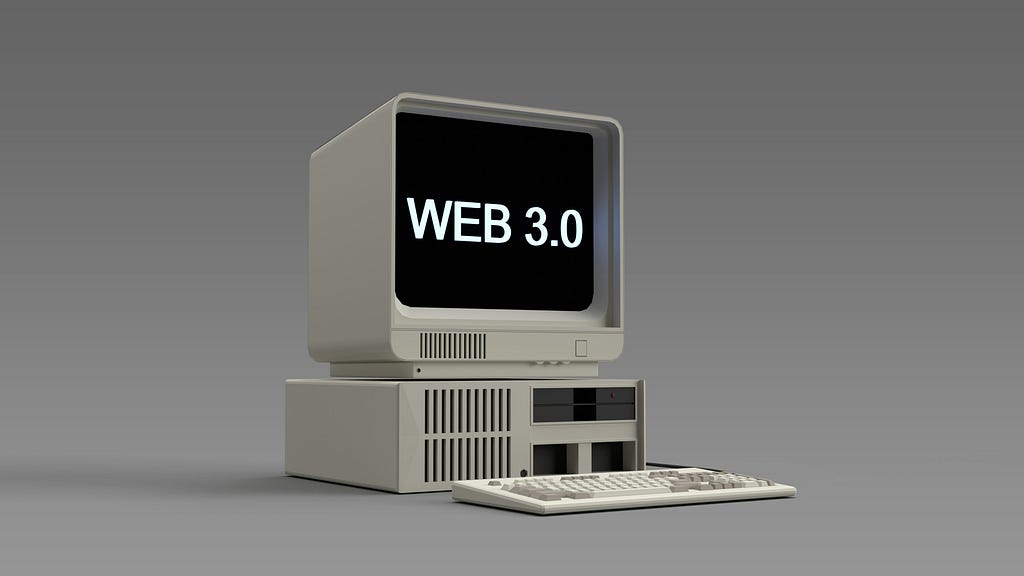 Photo by Bastian Riccardi on Unsplash
Photo by Bastian Riccardi on UnsplashWithout domains, there is no internet.
You need a domain like google.com to search for information or to see what your friends are up to.
The same goes for popular social media sites like facebook.com. Even this website, Medium.com, relies on a domain name. Without it, you wouldn’t be able to access this post.
The system behind all these domain names is called the Domain Name System (DNS).
What is DNS?
DNS stands for Domain Name System, and it’s responsible for naming the entities on the internet, such as computers, servers, and other IP networks.
Think of DNS as a phone book for the internet. You provide a name, and DNS returns the associated information, like an IP address.
Before DNS, the internet used numerical IP addresses, such as 69.63.176.13, to identify locations. DNS made it possible to map these IP addresses to more user-friendly domain names like Facebook.com.
The current DNS system is managed by domain registrars like GoDaddy and Namecheap, along with DNS management service providers like Cloudflare and AWS.
DNS uses a hierarchical structure to manage public websites and their corresponding IP addresses, with the hierarchy resembling an inverted tree structure.
DNS Hierarchy.
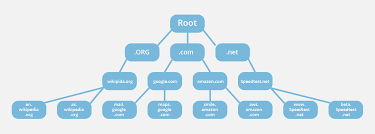 Image Credit: Cloudflare.
Image Credit: Cloudflare.As you see in the image above, there are four hierarchies in DNS.
The first one is:
- DNS Root Domain:
In the DNS Root Domain, there is a root name server which is the name server that answers the requests for records in the root zone and answers other requests by providing a list of authoritative name servers for the appropriate TLD (top-level domain).
The whole root domain system is governed by the National Telecommunications and Information Administration (NTIA), and the management is delegated to Internet Corporation for Assigned Names and Numbers (ICANN).
- Top Level Domain (TLD):
The second level in the hierarchy is the Top Level Domains which are installed in the root domain. We’re all familiar with these types of domains such as .com, .org, representing the character or type of main domain.
For example, if a domain ends with .com, then it would be Commercial organizations. If it ends with .org, then it would be Nonprofit organizations.
- Second Level Domain (SLD):
Below the TLD, there is a Second-Level Domain, and it can vary according to the buyer.
For example, in medium.com, .com is the TLD, and ccoingossip is the SLD.
The organizations that owned the TLD, like GoDaddy or Namecheap, can register SLD to individuals and organizations on the internet.
- SubDomain:
The DNS hierarchy structure ends in SubDomains.
SubDomains are defined as a domain that is part of the main domain.
For example, you often see google maps represented as map.google.com here map. is the subdomain of google.com.
This entire DNS hierarchy is controlled by central authorities, leading to issues like censorship and potential cyber-attacks. However, the rise of Web 3.0, powered by blockchain technology, is changing the game by giving users control over the internet and their data.
As part of Web 3.0, several blockchain-based decentralized Domain Name System protocols are emerging as gateways to this new internet era.
List of Decentralized Domain Name SystemsEthereum Name Service (ENS)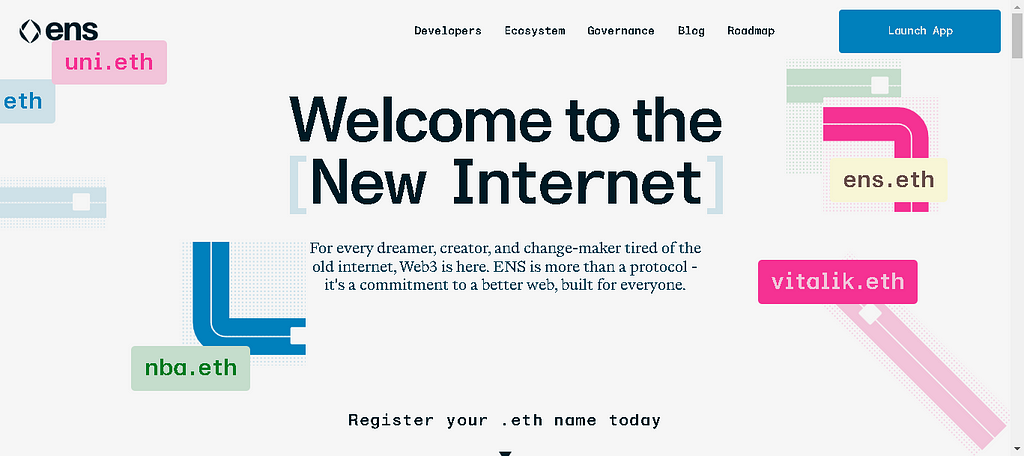
Ethereum Name Service is a DApp running on the Ethereum blockchain offering a new naming system mapping machine-readable identifiers (example, Ethereum addresses, and InterPlanetary File System (IPFS) content hashes) to human-readable names.
Simply put, you can buy domain names in ENS that end with .eth. For example, I can buy the domain karthik.eth and use it as the crypto wallet address, domain to create websites, username to access some DApps.
ENS started in early 2017 at the Ethereum Foundation, but in 2018, it spun off as a separate organization. The platform is managed by the Singaporean non-profit, True Names LTD. And have the ERC-20 token ENS in place for the fueling platform.
ENS works differently than the old DNS, in which old DNS have different hierarchies in place ENS have Registry and Resolver.
Registry:Registry is the smart contract that runs on the Ethereum blockchain.
Registry work is simply mapping a domain name to the correct resolver.
The ENS Registry stores the three critical pieces of information about each domain: the owner of the domain, the resolver for the domain, and the caching time for all records under the domain.
Resolver:This is another smart contract running on the Ethereum blockchain, which translates the domain names to the machine-readable addresses and vice versa.
Resolving the name in ENS is a two step process.
The registry first checks for the resolver responsible for the name, and then the resolver provides the answer to the given query.
You can also use ENS with DNS names you already own. Like .com, .org, a detailed guide on how to do it step by step is here.
The ownership of the domain is not permanent. You have to pay a renewal cost of $5 to $640 in ETH, depending upon the character.
Handshake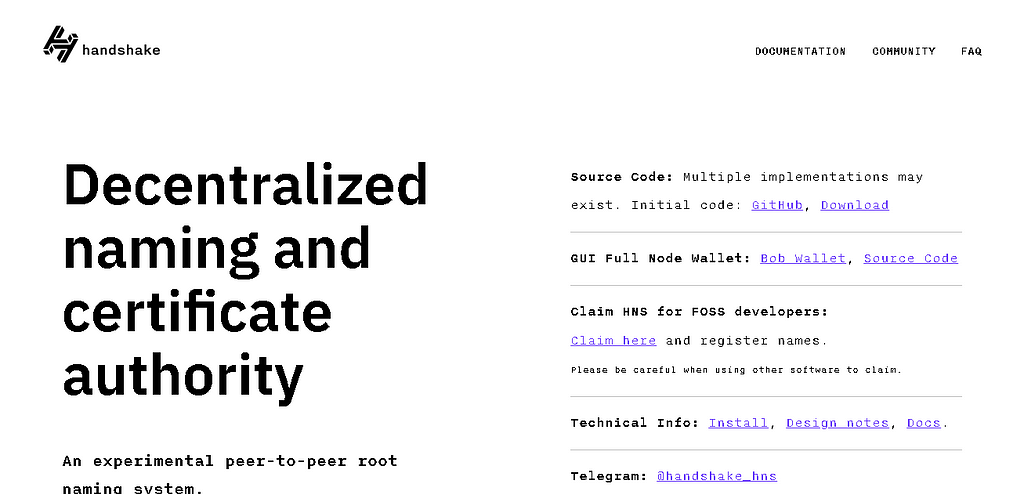
Handshake is the decentralized peer-to-peer domain name protocol aiming to provide Top Level Domains by removing the central authority like ICANN, which oversees the entire DNS operation.
Handshake is not like ENS, where smart contracts manage all the operations. Handshake has its own blockchain that runs on Proof-Of-Work (POW) consensus and has the cryptocurrency Handshake (HNS) to fuel the entire domain name registration process.
The process of registering your TLD is automatically managed by their own Handshake software, where you have to participate in the auction to get your desired TLD.
The auction for TLD is held every two weeks, and you must bid Handshake’s cryptocurrency, HNS, to take part in the auction.
The winning bidder pays the second-highest price, using a format known as a Vickrey auction. The winner’s payment is burned by the network, so the winner doesn’t pay bids to anyone.
Apart from this auction process, you can purchase Handshake TLD domains using Namecheap, where you get .creator, .elite, .ill, .oh, .oo, .oot, .orb, .p, .pgp, .saas, and .sox, by simply enabling the HNS option and following the regular process for registering a traditional domain name.
The big problem with Handshake TLDs is you cannot access them directly with a regular browser like Chrome or Firefox. So, in order to access a handshake domain, an additional setup is required. This includes using one of the following:
- The Handshake software itself.
- NextDNS.
- VPN.
- HDNS.io.
- HNS.to.
- Browser extensions.
- Fingertip.
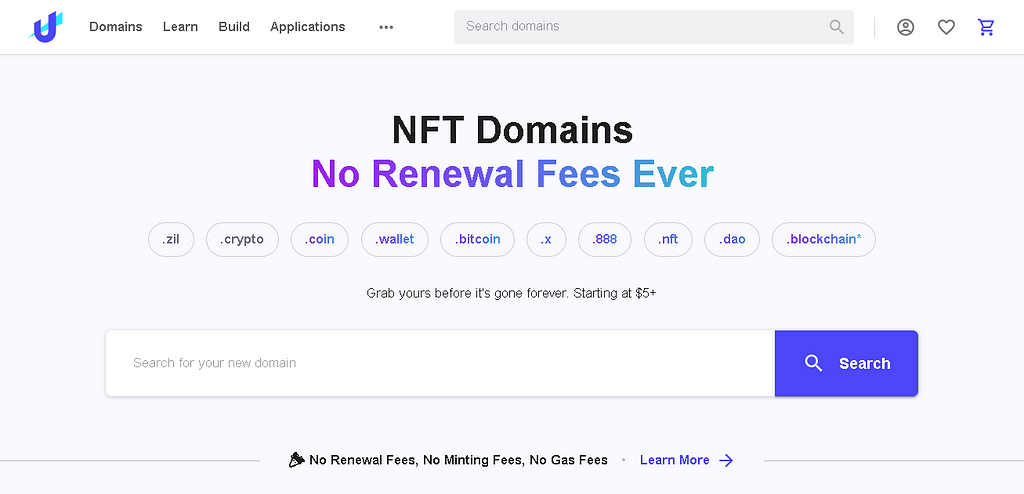
Unstoppable Domains works similar to ENS built on Ethereum and Zilliqa.
With Unstoppable Domains you can claim different TLD domains like .zil, .crypto, .x, .coin, .wallet, .bitcoin, .888, .nft, .dao,.blockchain.
The difference between ENS and Unstoppable Domains is, Unstoppable Domain uses two types of smart contract architectures, one is CNS (Crypto Name Service) which work with two sets of contracts Registry and Resolver like in ENS, another is built by Unstoppable Domain called UNS (Unstoppable Name Services) which uses only one set of smart contract Registry used for both managing domain ownership and storing domain records.
In both architectures, domains are issued as an ERC-721 token, also known as non-fungible-token (NFT). NFTs are unique, indivisible tokens and are often used to represent one-of-a-kind digital items.
Representing domains in NFTs gives you, the user, a big advantage of never renewing the domain. Once you own it, you own it forever! Also, allowing you to manage your crypto domain ownership from compatible cryptocurrency wallets, exchanges, and marketplaces, an advantage to the developers is to integrate Unstoppable Domains into other applications.
Y.at
Y.at is different from all the platforms above. It is centralized and controlled by the US-based Emoji ID, LLC DBA Yat Labs.
Y.at map URL or any content you wish to a string of up to six emojis (example, https://y.at/
